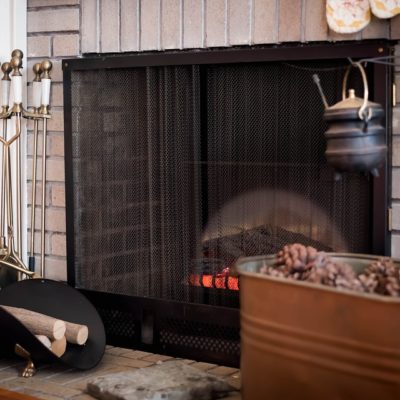Your home’s heating and cooling expenses are directly influenced by how well your home traps thermal energy.
If you crank up the air conditioner during the summer, only for the cooled air to leak outside your home, you can expect higher-priced utility bills.
Conversely, you’ll pay more for utilities during the winter if the heated air leaks outside your home.
So, where exactly should you check for thermal energy leaks in your home?
#1) Exterior Doors
Exterior doors are a common source of thermal energy leaks in homes.
Glass doors, for example, have a lower R-value than traditional exterior doors made of metal and polyurethane. As a result, they aren’t particularly effective at trapping thermal energy inside your home.
With that said, even exterior doors with a high R-value can result in the loss of thermal energy.
If an exterior door has missing or worn weatherstripping, thermal energy will leak around the bottom.
#2) Windows
According to the U.S. Department of Energy (DOE), thermal energy loss through the windows contributes to roughly 30% of the average home’s heating and cooling expenses.
Single-pane windows, for instance, are less efficient than double-pane windows, resulting in a greater loss of thermal energy. And like doors, windows should also have weatherstripping or caulk to fully seal your home.
#3) Chimney Flue
If your home has a fireplace, you should check the chimney flue to ensure it’s closed.
The flue, of course, is designed to seal the chimney so that indoor air won’t leak outside your home.
When using your fireplace, you should keep the chimney open. When you aren’t using your fireplace, however, you should keep the flue closed to protect against the loss of energy.
#4) Air Ducts
You might be surprised to learn that air ducts are a common source of thermal energy leaks in homes.
Whether the ducts travel through your home’s attic or basement (or both), they should be properly insulated. Additionally, air ducts should be fully intact.
If an air duct is torn or ruptured, conventional wisdom should lead you to believe that it will leak a significant amount of thermal energy.
#5) Electrical Outlets
Even electrical outlets can cause thermal energy to leak.
If there’s little or no insulation behind an outlet cover, thermal energy will likely leak through this space.
To prevent this from happening, consider using a piece of pre-cut foam insulation to fill your electrical outlets.
If you are experiencing a problem with energy leaks in your home call us at 512-336-1431 to schedule an appointment. We’ll be glad to come out and take a look at the issue.
1431-183 A/C & Heating proudly serves Round Rock, Georgetown, Cedar Park, Pflugerville, Leander, Liberty Hill, and North Austin.


Heat leaks /hot spots under floors and in bottom of bathtub
Mystery
Can you advise ?
Tks